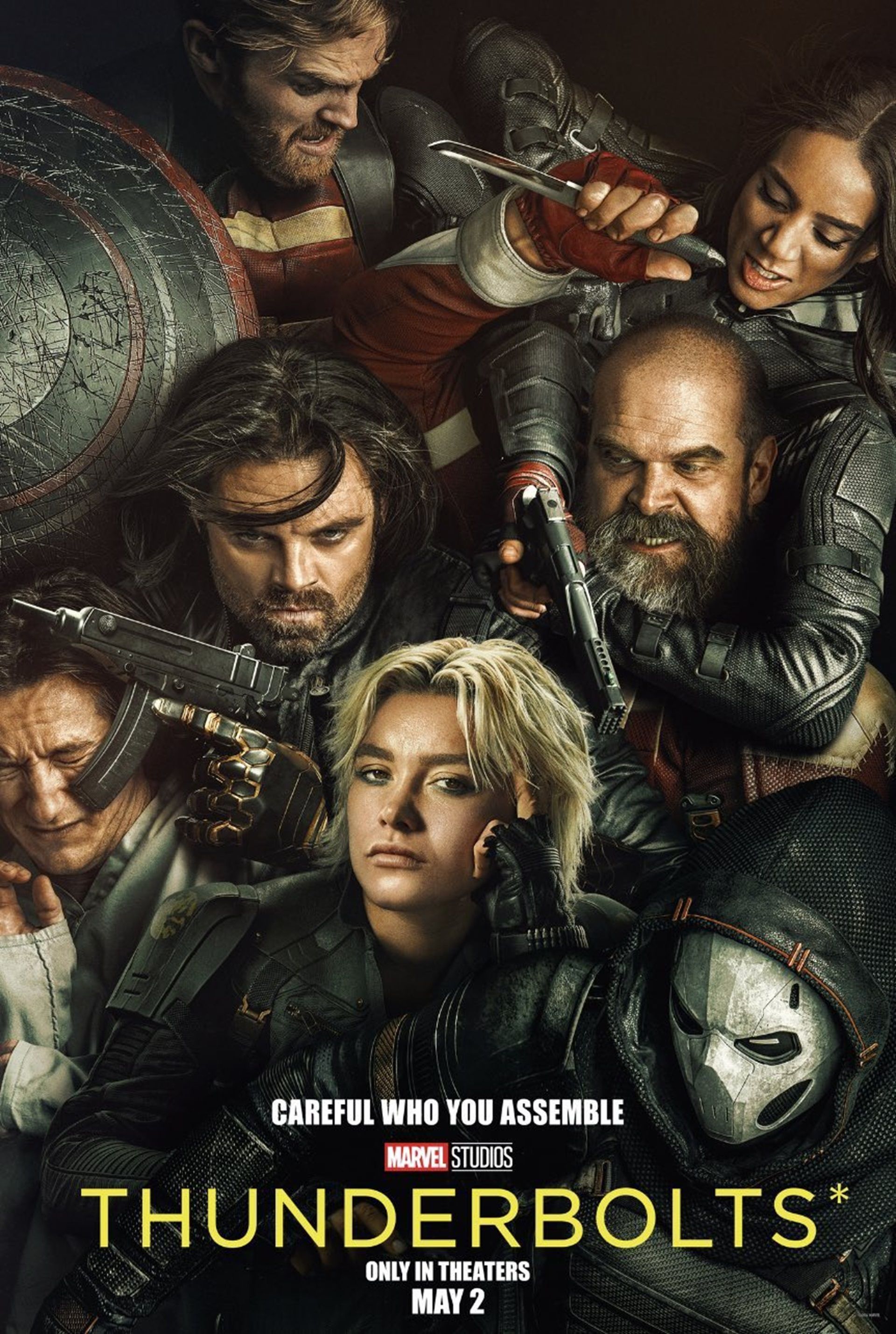The Evolution Of The MCU: Learning From Past Mistakes To Create Better Stories

Table of Contents
Early MCU Successes and Foundational Elements
The initial phases of the MCU laid a strong foundation for its future success. Two key elements stand out: interconnectedness and strong character development.
The Power of Interconnectedness
The MCU's innovative approach of linking individual films was a groundbreaking strategy. Instead of standalone stories, Marvel created a shared universe where characters and plot threads crossed over, creating a sense of continuity and anticipation.
- Examples of successful interconnected narratives: The introduction of Iron Man in his solo film, setting the stage for his pivotal role in The Avengers, exemplifies this perfectly. The shared threat of Loki and the assembling of Earth's Mightiest Heroes created a powerful narrative arc that resonated with audiences. Similarly, the introduction of Nick Fury and S.H.I.E.L.D. across multiple films created a sense of overarching mystery and intrigue.
- Impact on audience engagement: This interconnectedness fostered a loyal fanbase eager to see how different storylines intertwined and contributed to the larger narrative. The anticipation for crossover events and the payoff of long-term plotlines kept audiences engaged and returning for more.
- Benefit of long-term planning and consistent world-building: The success of the MCU's early phases highlights the importance of strategic planning and consistent world-building. Marvel Studios meticulously crafted a shared universe with a consistent tone and style, ensuring that each film felt like a part of a larger whole.
Character Development as a Cornerstone
Beyond the interconnected universe, the early MCU prioritized compelling character arcs and relatable heroes. These characters weren't just superheroes; they were flawed individuals with relatable struggles and personal journeys.
- Examples of strong character development: Captain America's transformation from a naive soldier to a seasoned leader is a prime example. His journey throughout multiple films, grappling with moral dilemmas and evolving his ideals, resonated deeply with audiences.
- Importance of character flaws and growth: The early MCU understood that relatable characters aren't perfect. Showing their vulnerabilities and allowing them to grow and learn made them more engaging and human. This emphasis on character arcs enriched the overall narrative and kept audiences invested in their fates.
- Role of strong supporting characters: The success of the MCU's early character development also lies in the strength of its supporting cast. Tony Stark's relationship with Pepper Potts, Steve Rogers' friendship with Bucky Barnes, these relationships added depth and emotional resonance to the main narratives.
MCU Missteps and Critical Analyses
Despite its early successes, the MCU wasn't without its missteps. Analyzing these allows for a deeper understanding of its evolutionary path.
Over-Reliance on Formulaic Storytelling
As the MCU expanded, some critics argued it fell into the trap of formulaic storytelling. This predictability sometimes led to audience fatigue.
- Examples of films criticized for predictable plots or lack of originality: Some critics pointed to certain phases as having overly familiar plot structures, relying heavily on established superhero tropes without sufficient innovation. A sense of repetition emerged in some narratives, leading to a decline in audience engagement for a portion of viewers.
- Dangers of formulaic storytelling and the importance of innovation: The reliance on formula risks alienating audiences who crave originality and unexpected twists. The MCU’s success depends on its ability to consistently reinvent itself while staying true to its core identity.
- Impact of repetitive storylines on audience engagement: While a certain level of familiarity is comforting, excessive repetition can lead to a sense of staleness and diminished audience interest. The MCU needed to find ways to keep its stories fresh and exciting.
Pace and Pacing Issues in Certain Phases
The pacing of some MCU films and phases drew criticism. In certain instances, the narrative felt rushed or uneven, impacting the overall viewing experience.
- Examples of films or phases where pacing was criticized: Certain films were criticized for cramming too much action into too little time, sacrificing character development and emotional depth. Conversely, other films were criticized for dragging on unnecessarily.
- Importance of a well-paced narrative to maintain audience interest: A well-paced narrative is crucial for maintaining audience engagement. It allows for sufficient character development, plot progression, and emotional impact. A rushed pace can leave the audience feeling overwhelmed, while a slow pace can lead to boredom.
- Relationship between pacing and character development: Effective pacing allows ample time for character arcs to unfold naturally. A rushed pace can prevent audiences from connecting with the characters and their emotional journeys.
Inconsistent Tone and Style Across Projects
Maintaining a consistent tone and style across numerous films and creative teams presented a significant challenge for the MCU. Instances of stylistic inconsistencies drew criticism.
- Examples of films with stylistic inconsistencies: Differences in tone and visual style between individual films sometimes created a disjointed feeling for viewers. The variation in humor and overall aesthetic could sometimes jar viewers, disrupting the seamless experience sought by the MCU.
- Importance of a cohesive tone and style in maintaining a consistent brand identity: A consistent brand identity is crucial for a franchise like the MCU. A cohesive tone and style reinforce the overall narrative and create a stronger sense of continuity.
- Challenges of maintaining consistency across numerous creative teams: The sheer number of films and filmmakers involved in the MCU made it challenging to maintain absolute consistency.
The MCU's Adaptation and Growth
The MCU's response to criticisms and its willingness to evolve are testaments to its ongoing success.
Embracing Diverse Storytelling and Representation
The MCU has increasingly embraced diverse storytelling and representation in its characters and stories. This move towards inclusivity has been widely celebrated.
- Examples of diverse characters and stories: The introduction of characters from diverse backgrounds, ethnicities, and sexual orientations reflects a growing commitment to representation in the MCU. Stories exploring themes of identity and social justice have enriched the narrative.
- Importance of representation in storytelling: Diverse representation in film is crucial for fostering inclusivity and providing audiences from diverse backgrounds with relatable characters and stories.
- Impact of diverse narratives on audience engagement: Stories that reflect the diversity of the real world resonate with a wider audience, fostering stronger connections and greater engagement.
Experimentation with Genre and Narrative Structure
To keep its stories fresh, the MCU has begun experimenting with different genres and narrative structures. This willingness to take risks has paid off.
- Examples of genre bending and narrative experimentation: Shows like WandaVision and Loki experimented with different formats and genres, injecting new energy and creativity into the MCU narrative.
- Benefits of genre experimentation in keeping audiences engaged: Genre bending prevents formulaic storytelling and keeps audiences engaged by offering unique viewing experiences.
- Risk-reward aspect of taking creative risks: While experimenting with different genres carries risks, it also offers significant potential rewards in terms of audience engagement and critical acclaim.
Enhanced Character Complexity and Moral Ambiguity
The MCU has moved beyond simplistic portrayals of good versus evil, creating more nuanced and morally complex characters.
- Examples of morally gray characters: Many recent MCU characters exhibit morally ambiguous traits, challenging viewers to consider their actions and motivations. This complexity leads to more compelling narratives and character arcs.
- Importance of complex characters in driving compelling narratives: Complex characters offer richer emotional depth and more opportunities for exploration. The nuances of their moral choices and struggles create far more engaging narratives than simple good versus evil scenarios.
- Impact of morally ambiguous characters on audience engagement: Morally gray characters present audiences with difficult questions, prompting engagement and deeper reflections on the narratives.
Conclusion
The MCU's evolution from its early successes to its current, more refined storytelling approach demonstrates a remarkable capacity for adaptation and growth. By learning from past mistakes, such as over-reliance on formulaic plots and pacing issues, and embracing diverse storytelling and character development, Marvel has created a consistently engaging universe. The journey of the MCU Evolution is a testament to the importance of innovation, audience feedback, and the ongoing pursuit of creating more compelling narratives. To stay updated on the latest developments and analyses of the MCU's ongoing evolution, keep following our blog for more articles on MCU Evolution and similar topics.

Featured Posts
-
 Analyzing Marvels Thunderbolts A Critical Look
May 05, 2025
Analyzing Marvels Thunderbolts A Critical Look
May 05, 2025 -
 Thursday Court Roundup Bra Smuggling Case Highlights Key Issues
May 05, 2025
Thursday Court Roundup Bra Smuggling Case Highlights Key Issues
May 05, 2025 -
 Lizzos Dramatic Weight Loss Transformation At The Oscars
May 05, 2025
Lizzos Dramatic Weight Loss Transformation At The Oscars
May 05, 2025 -
 3 Million In Undisclosed Nuclear Investments Examining Andrew Cuomos Holdings
May 05, 2025
3 Million In Undisclosed Nuclear Investments Examining Andrew Cuomos Holdings
May 05, 2025 -
 Google Faces Breakup Demand Over Online Advertising Dominance
May 05, 2025
Google Faces Breakup Demand Over Online Advertising Dominance
May 05, 2025
